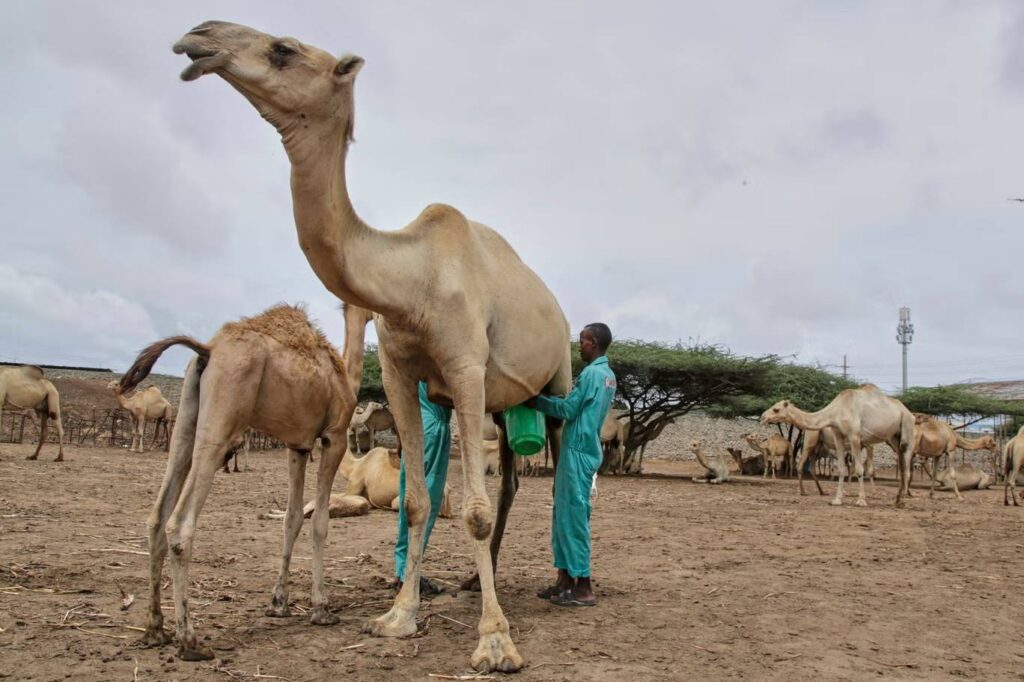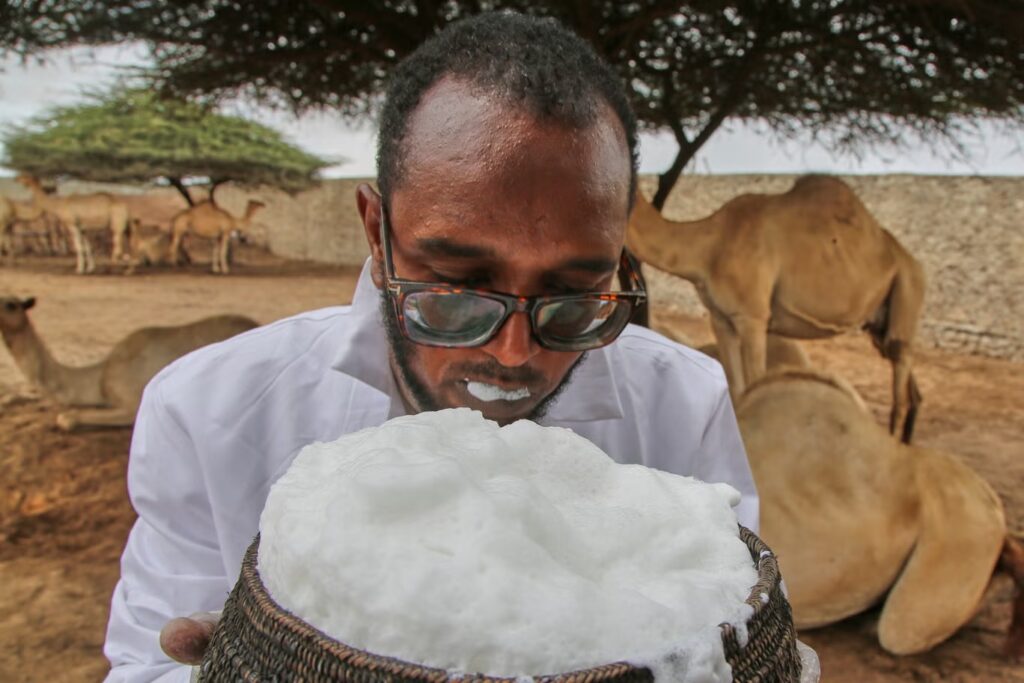From the heart of Somalia’s arid landscape to the refrigerated shelves of Mogadishu’s supermarkets, Somali camels are leading a white revolution—merging cultural heritage with modern technology.
This transformation is turning Somalia camel milk into a nutritional treasure and economic opportunity for a country hungry for sustainable development.
Camels: Icons of Somali Heritage
For generations, camels have been central to Somali pastoral culture, providing food, transportation, and deep-rooted symbolic value.
But today, just outside the dusty capital, these iconic animals are becoming the face of a modern agricultural shift poised to reshape Somalia’s dairy industry.
Beder Camel Farm: A Glimpse into the Future
A visit to Beder Camel Farm, located near Mogadishu, offers a striking look at this transformation.
Dozens of camels graze peacefully while trained staff carefully milk them, collecting frothy milk into sterilized containers.
As the demand for Somalia camel milk rises locally, Somali entrepreneurs are recognizing its untapped commercial potential.

Somalia: Home to the World’s Largest Camel Population
With over 7 million camels, Somalia has the largest camel population in the world.
Yet, only a small fraction of Somalia camel milk makes it to urban grocery shelves, according to local industry estimates.
This mismatch between potential and production is now being addressed through investment and innovation.
Revolutionizing Somalia Camel Milk Production
At the heart of this change is Dr. Abdirizak Mire Hashi, veterinarian and director of Beder Farm.
For him, camel farming is about more than profit—it’s about preserving Somali tradition while embracing scientific progress.
Each camel at Beder yields up to 10 liters of milk daily, double the traditional average.
This is due to improved veterinary care, scientific feeding practices, and modern milking methods.
Regular veterinary checkups, nutritional supplements, and tailored feed have replaced traditional nomadic herding.
The Rise of Somalia’s First Camel Milk Yogurt Plant
One of Beder’s biggest milestones is launching Somalia’s first yogurt factory dedicated to camel milk.
Workers in white lab coats monitor stainless-steel tanks where camel milk is fermented and packaged under the Beder brand, now sold in supermarkets across Mogadishu.
According to Nelson Njuki Githu, a Kenyan food engineer managing the production line, Somalia camel milk yogurt addresses a crucial dietary need:
“Camel milk has lower lactose than cow milk, making it suitable for lactose-intolerant people.
It’s also richer in Vitamin C, iron, and zinc.”
Health Benefits of Camel Milk Yogurt
Nutritionist Dr. Yahye Shul confirms that camel milk yogurt can significantly support public health in Somalia, where malnutrition remains a challenge.
“Camel yogurt is rich in magnesium, calcium, and essential vitamins like B12, C, and D.
It also contains probiotics that aid gut health,” he says.
Boosting Employment and Market Share
Jama Omar, Beder’s CEO, explains that the farm employs nearly 200 full-time workers, with additional seasonal labor.
“We were among the first to start commercial camel milk farms in 2006.
Today, we control about 40% of the camel milk market,” he says.
Expanding Beyond Mogadishu
Looking ahead, Dr. Hashi plans to expand Beder’s milk collection network beyond the capital and train rural herders in modern hygienic milking techniques.
“If we modernize camel farming, we can create jobs, improve nutrition, and foster national pride in local products,” he explains.
Government Support and National Strategy
The Somali Ministry of Livestock is also encouraging more investments in Somalia camel milk sector.
Dr. Qasim Abdi Maalim, Director of Animal Health, points out:
“Camel milk’s benefits are immense.
Countries like the UAE even use it in cosmetics.
Somalia must advance its supply chains and capitalize on this opportunity.”
He added that a new dairy law and a national livestock sector strategy are being developed, with plans for a major investment roadmap.
A Slow but Steady March Forward
Back at the farm, a line of camels strides slowly under the golden afternoon sun.
Their patient gait reflects Somalia’s journey—progress may be gradual, but it’s steady and unstoppable.
From ancient desert caravans to supermarket yogurt cups, Somalia camel milk revolution is pouring hope, health, and heritage into every bottle.


